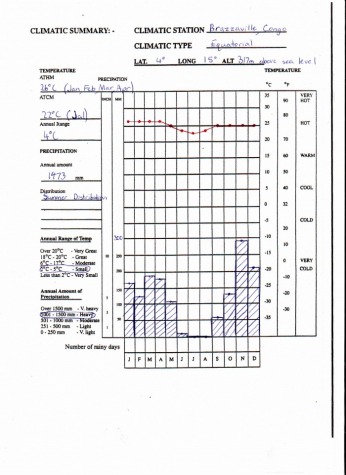Physical Environment
General Information
The terrain of the Congo River Basin is extremely diverse, ranging from tall hilly forests to wet swamps and deep valleys. Within this enormous area, two main ecosystems exist, these being the rivers and the rainforest itself.
Forests
An important feature of the Congo's forests is that they recycle up to 95% of their own rainwater, with as little as 5% of the rainwater originating from outside sources, probably because they have adapted to deal with low rainfalls, considered as one of the world's "dry" forests (1,500 to 1,800mm of rain per year).
Rainfall is an important factor in which type of forest grows, with evergreen forests growing in areas where there the dry season lasts no longer than two months, whereas semi-deciduous forest grow where the dry season is lasts 3 months or over.
Forests are very important to the soil of the Congo rainforests, because the roots of the many trees and plants hold the soil together, and without the plants, the soil would become useless and unable to support any weight. This is a major problem in the forests of the Congo, because, due to deforestation, the soil is literally falling apart, and will require years to regain its stability.
Rivers
The Congo River is an amazing 4,380km long, making it the fifth longest river in the world. The Congo's river system is extremely important to the livelihood of the people of the region, in that there is no way to access the core of the country other than through the use of the extensive river system. This allows trade to take place in areas which would otherwise be inaccessible, offering the people a means of earning an income.
An enormous 10,000 different streams make up the Congo River. The river begins at the junction of the Lualaba and Lapula rivers (Southern Congo), and from this point the waters then flow for six months to reach the river's end at the Atlantic Ocean.
Climate and Graph
The climate of the Congo River Basin (Brazzaville) is typical of an equatorial area, being generally very stable, with only a 4 degrees Celsius annual range of temperature. Also, it experiences heavy rainfall in the summer months, and the rainfall then drops off to an amazing 0mm per month for a two month period during June and July.

